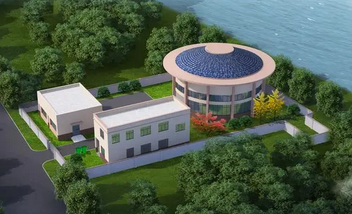Pump Station Design and Pump Equipment Selection Guide
Pump station design and pump equipment selection is a complex but crucial process, which is directly related to the operating efficiency, energy consumption cost and overall project benefits of the pump station. The following is a brief guide to pump station design and pump equipment selection:
I. Pump station design points
Clear requirements:
Determine the total flow, head, power and inlet and outlet pipe diameters required by the pump station.
Consider the flow range and the water quality characteristics to be transported.
Topography and water level analysis:
Calculate the required head based on the topography and water level conditions of the pump station location.
Evaluate the height difference between the pump station floor elevation and the clear water tank, the most unfavorable point and other locations.
Hydraulic calculation:
Perform detailed hydraulic calculations, including hydraulic losses in the suction and pressure lines.
Determine the reasonable installation height of the pump station to ensure the efficient operation of the water pump.
Plane layout and elevation design:
Draw the plan and section of the pump station, and arrange the location of the main equipment, pipelines and auxiliary equipment reasonably.
Ensure that the elevation layout of the pump station is reasonable and meets the requirements of hydrodynamics.

2. Pump Equipment Selection Guide
Flow and head matching:
Select the appropriate pump type from the pump product sample or comprehensive type spectrum according to the designed flow and head of the pump station.
Considering the flow variation range, multiple pumps can be selected to run in parallel to improve the adjustment flexibility.
Adaptation to medium characteristics:
Select the appropriate pump material and shaft seal type according to the properties of the conveying medium (such as temperature, density, viscosity, corrosiveness, solid content, etc.).
Economic considerations:
Comprehensively compare the equipment costs, operation costs, maintenance costs and management costs of different pump types, and select the solution with the lowest total cost.
Give priority to serialized, standardized, universal and updated products.
Reliability and ease of operation:
Select a pump type with high mechanical reliability, low noise and low vibration.
Consider the maintenance convenience of the pump station to ensure that the equipment is easy to operate and repair.
Backup and redundancy design:
Determine the backup rate of the pump station according to actual needs to ensure continuous water supply or drainage in an emergency.




